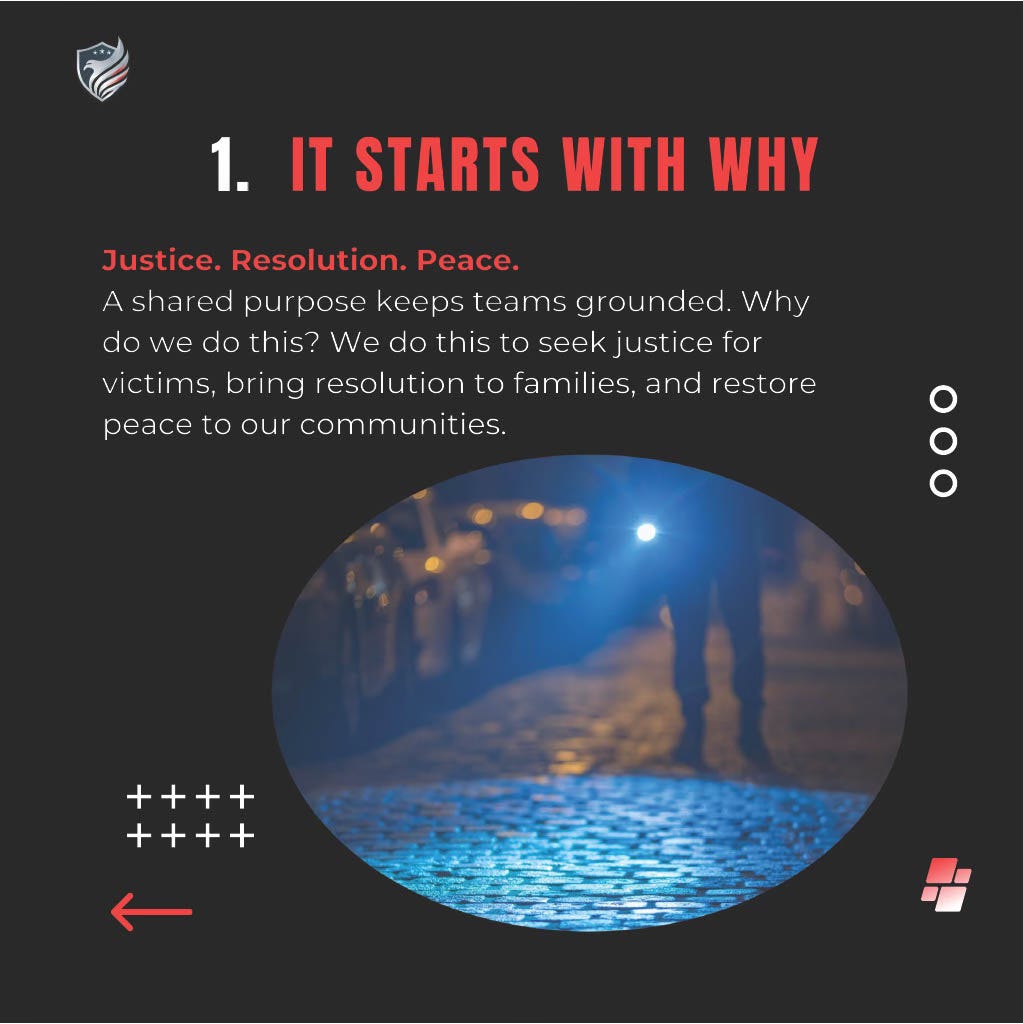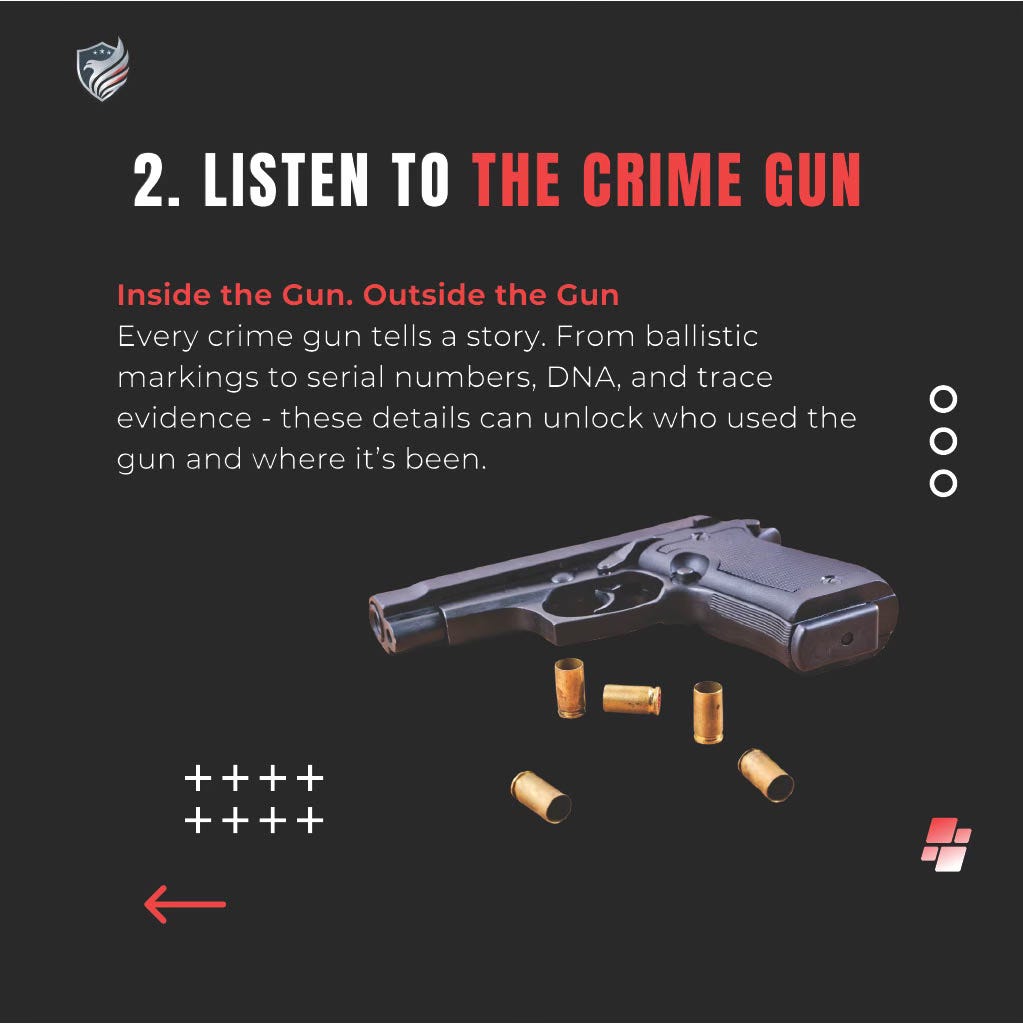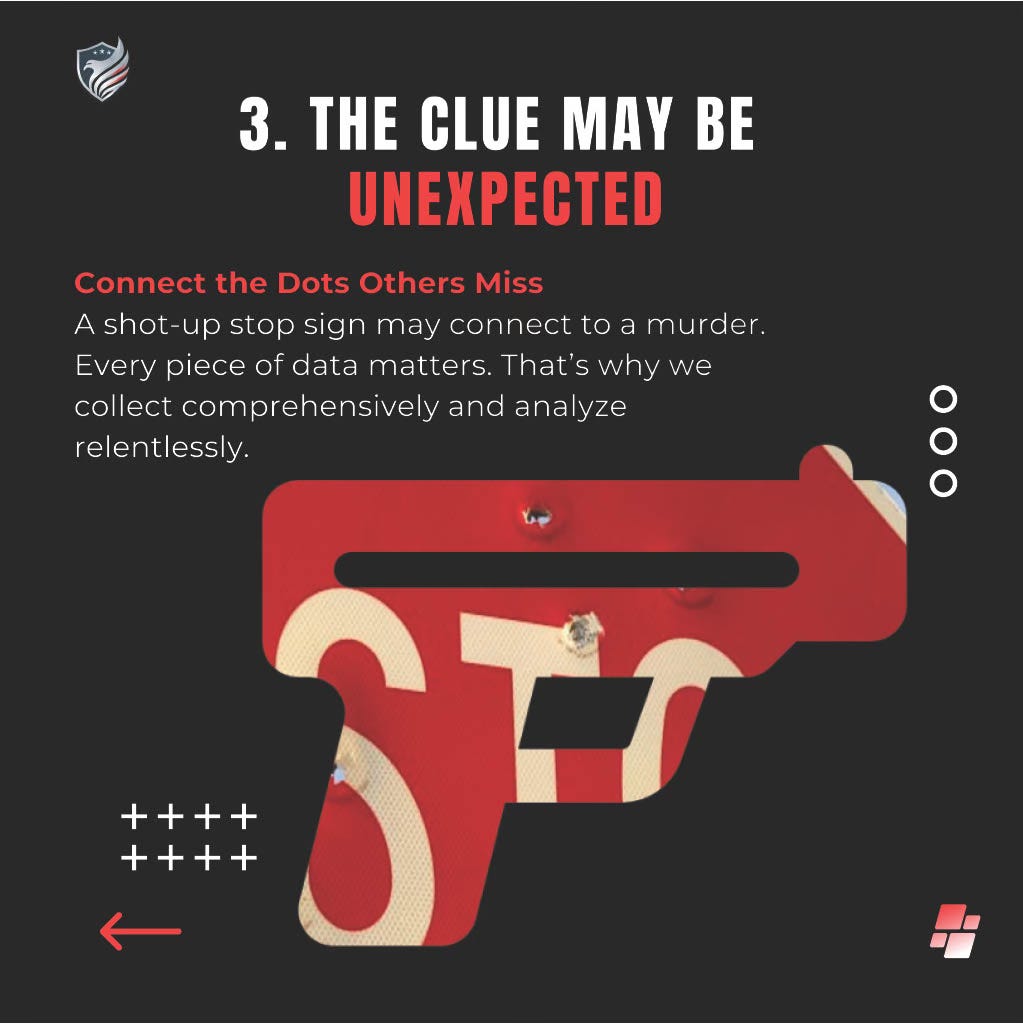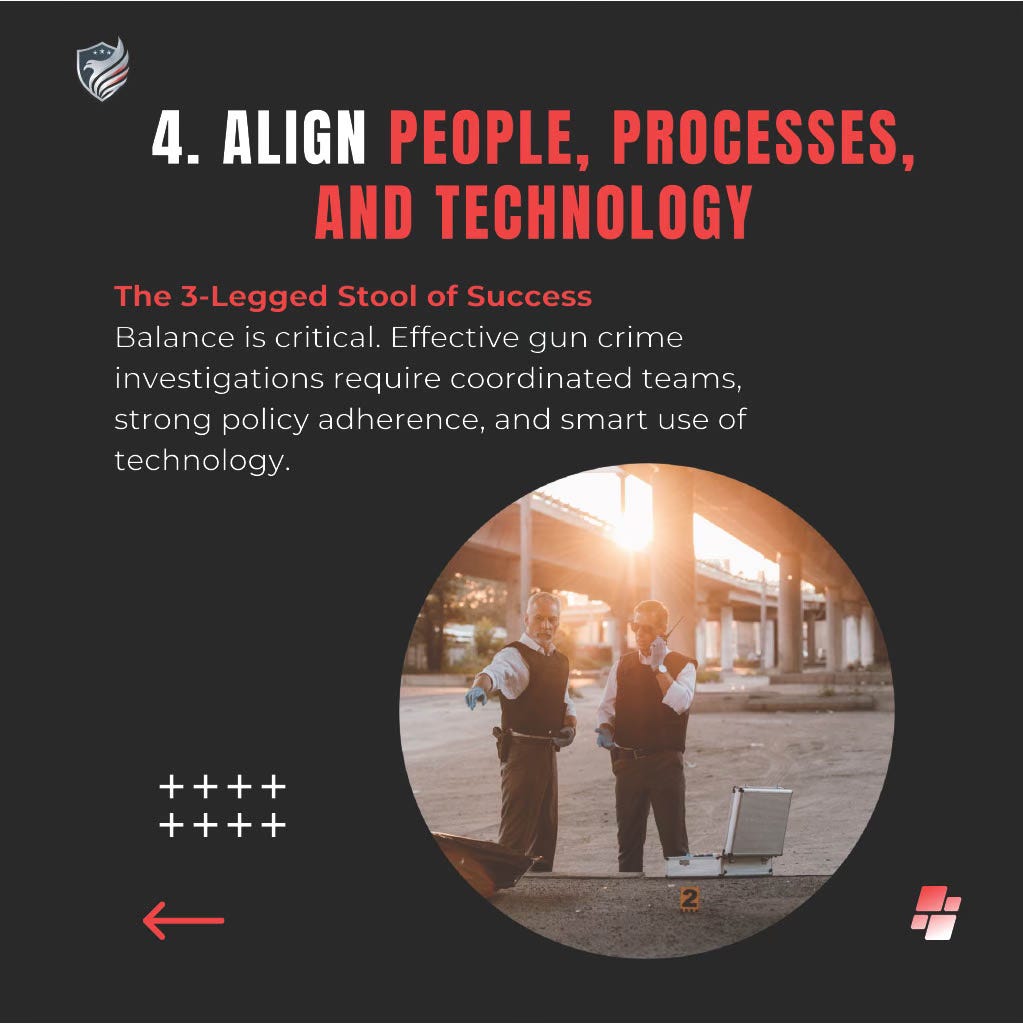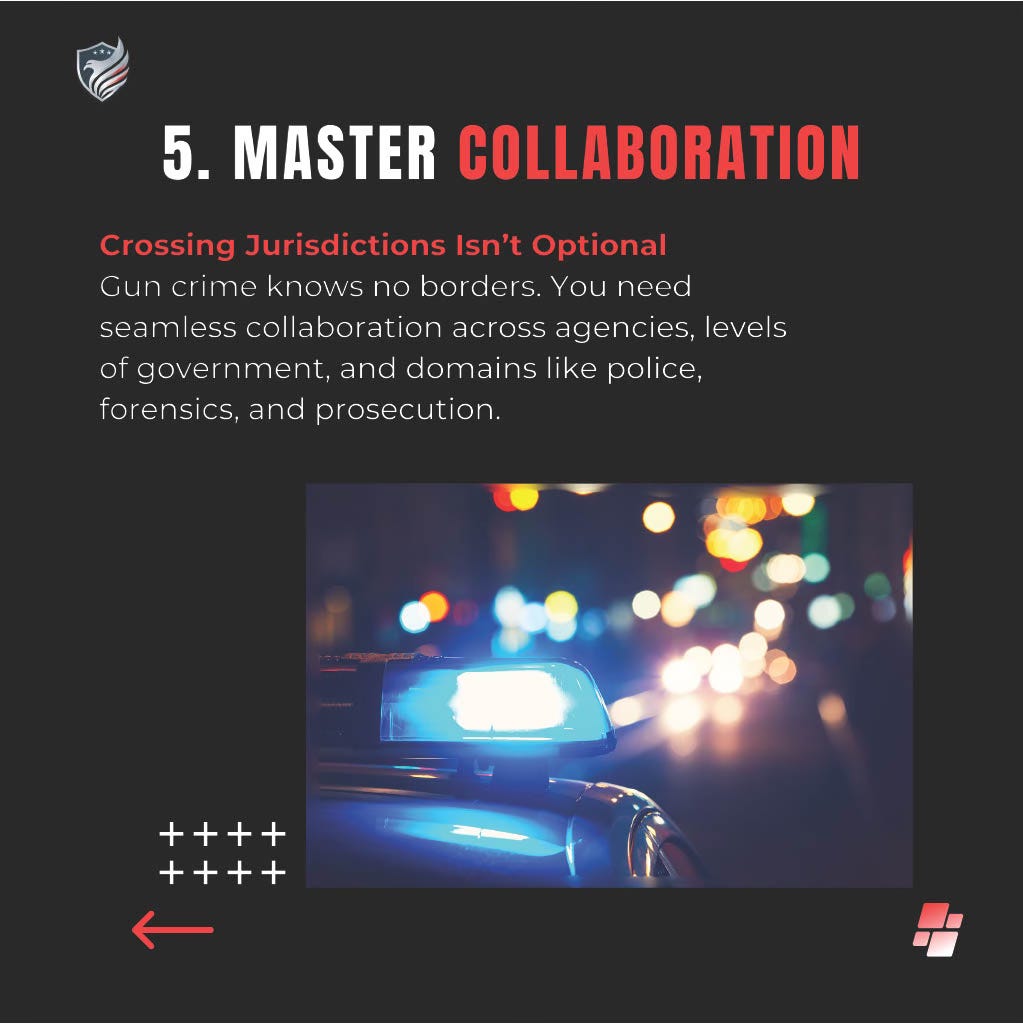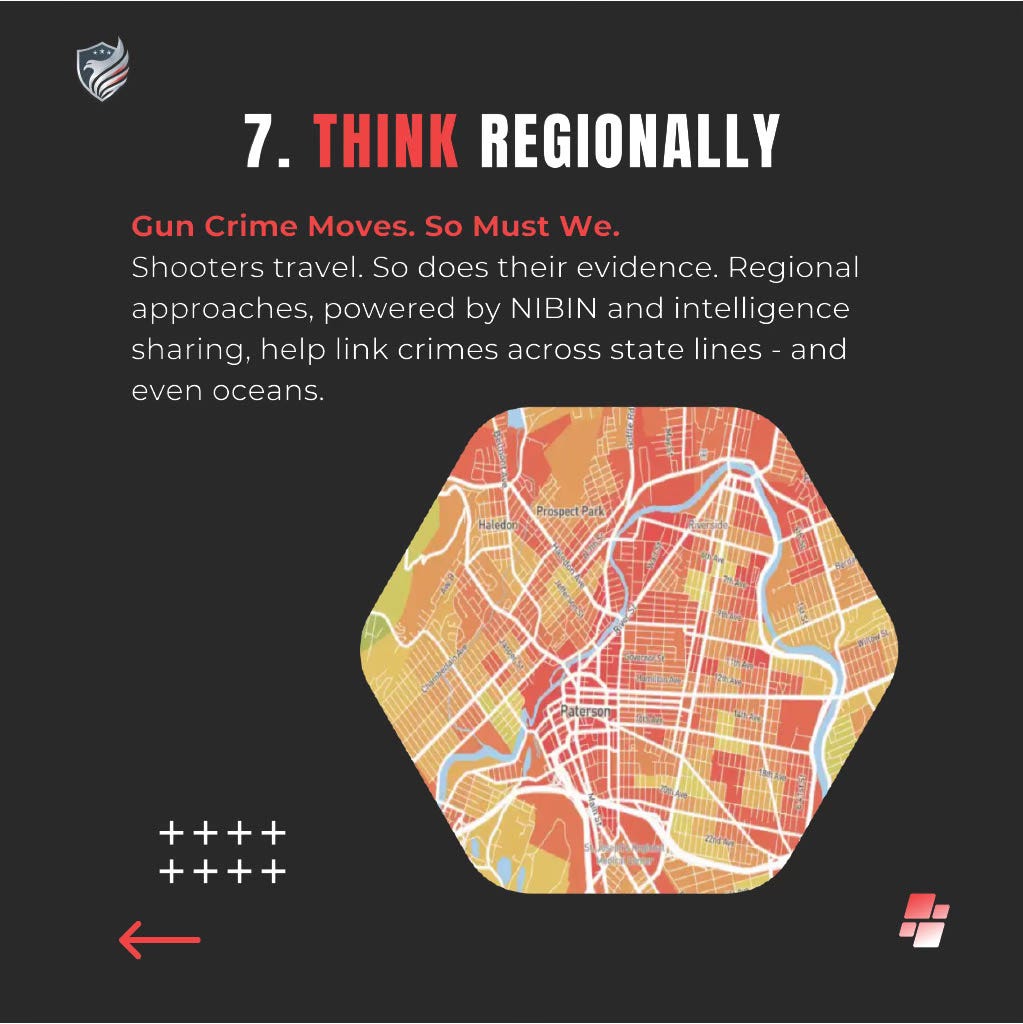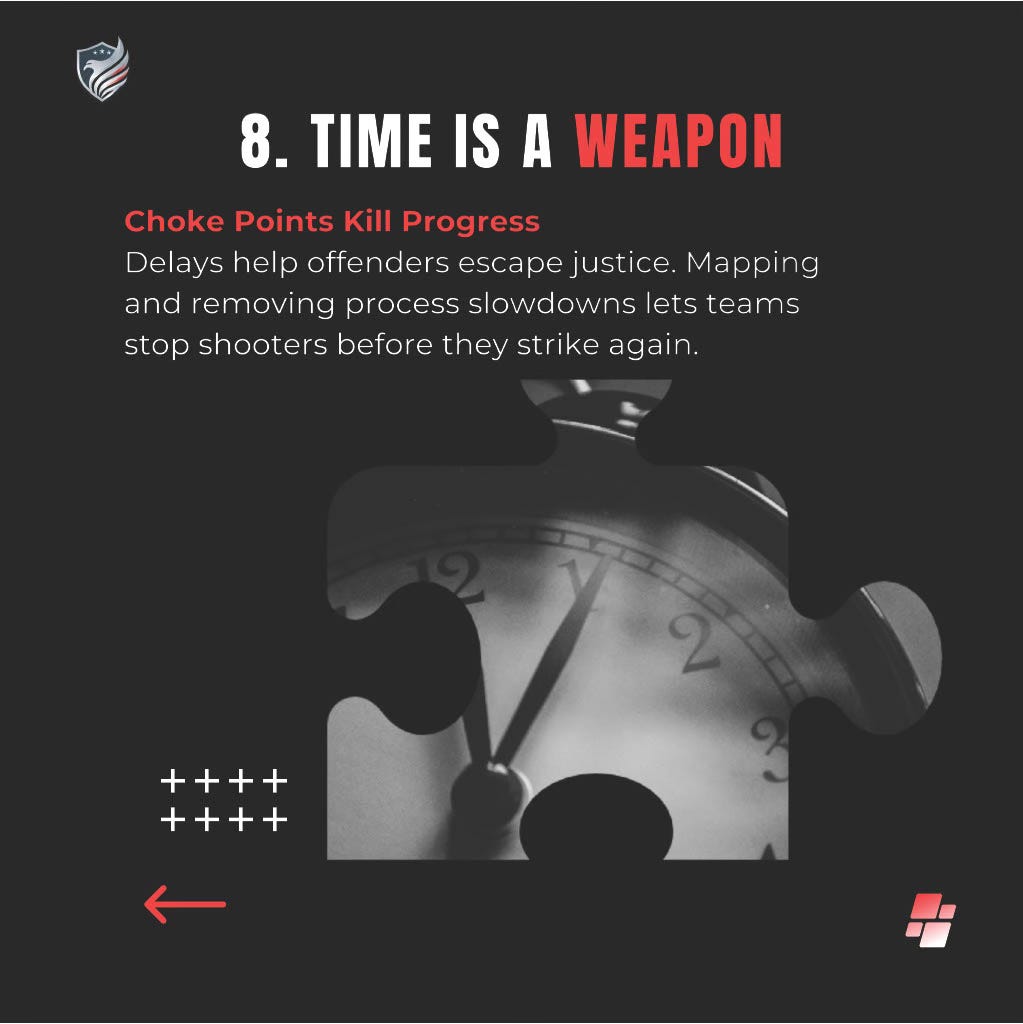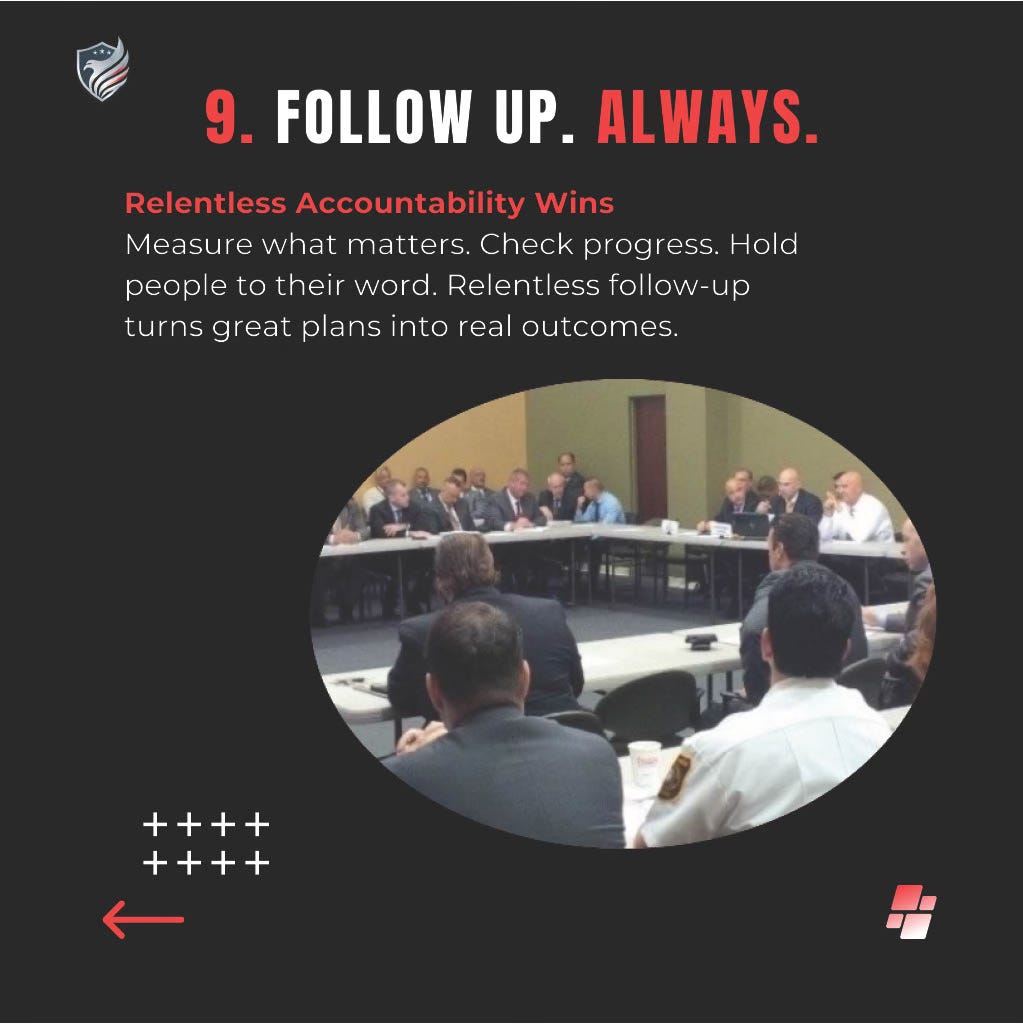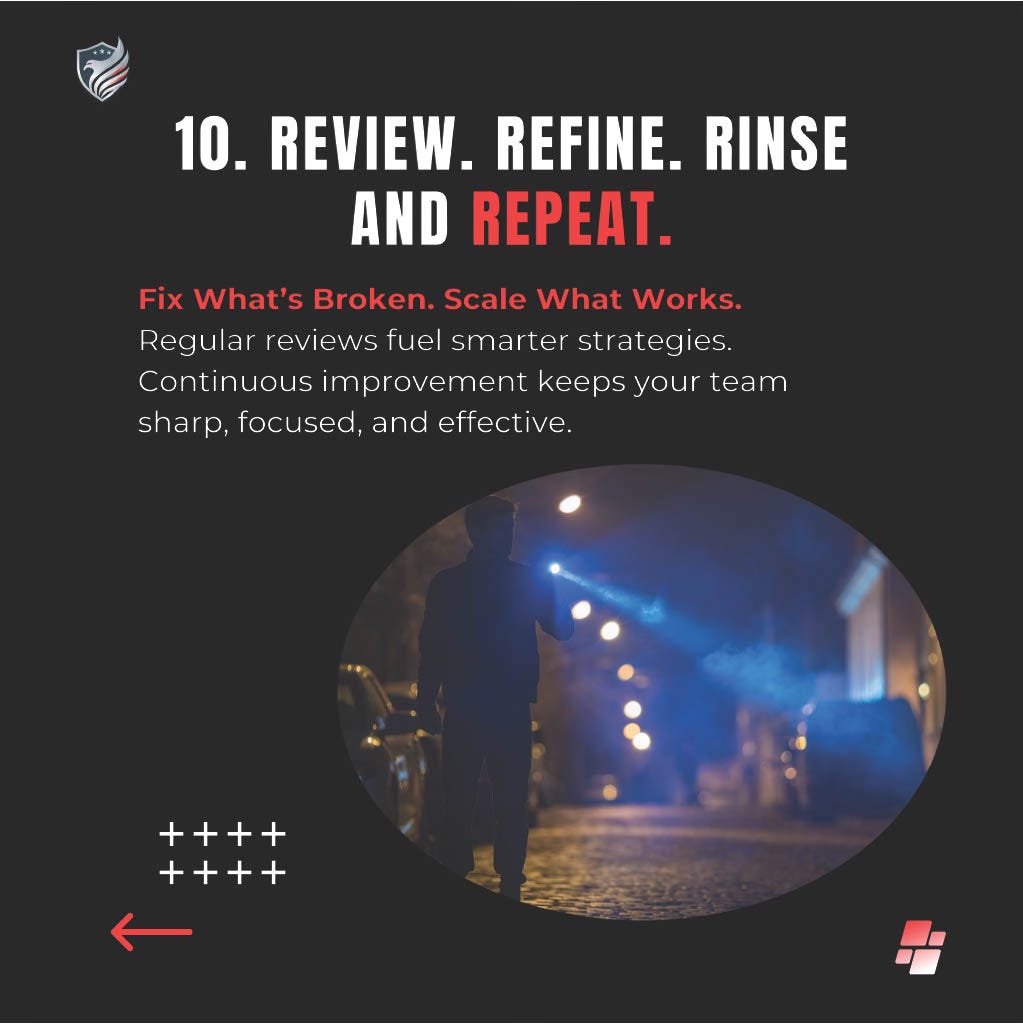What it takes to combat gun related violence
A Ten-Pillar Approach
Gun-related violence remains one of the most persistent and complex challenges facing our communities. While headlines often highlight tragic outcomes, the solutions require more than reactive measures or isolated tactics. They demand a proactive, strategic, and relentless approach. Real progress happens when we organizations start building a system that works smarter, faster, and more collaboratively.
At the heart of effective violence reduction is a framework built on ten essential pillars - a practical guide for public safety professionals, policymakers, technologists, and community leaders. These pillars aren’t just best practices - they are battle-tested principles grounded in real-world experience and common-sense strategy.
It starts with understanding why we do this work, because every bullet leaves behind a story of trauma, loss, and urgency.
It requires us to listen to the crime gun, to see each recovered firearm as both a clue and a voice.
It challenges us to recognize that the clue may be unexpected, hiding in plain sight or buried in overlooked data.
We must align people, processes, and technology, because true impact doesn’t come from tools alone, but from how we integrate and apply them.
Mastering collaboration across agencies, disciplines, and jurisdictions isn’t optional. It is the only way forward to advance effective strategies to combat gun-related crime.
And organizations must be willing to use every tool in the toolbox, from NIBIN to other available technologies that provide timely crime gun intelligence.
Since gun related crime and those that perpetuate move, organizations must consider, develop, and implement strategies that embrace the notion of thinking regionally.
It is also crucial they recognize and account for time as weapon that can interfere with an effective response - whether tactical or strategic in nature - that saves lives.
Most importantly, a robust program requires follow up. Always! Because persistency brings justice, resolution, and peace.
Finally, organizations must review, refine, and repeat, because sustainable impact comes from learning, adapting, and never settling for “good enough.”
Combating gun-related violence isn’t about quick wins or reactive enforcement - it’s about building a sustainable, purpose-driven system that prevents, detects, and disrupts violent crime before it escalates.
That journey begins with clarity of purpose: understanding that every action taken is in service of saving lives, delivering justice for victims, and restoring peace in our communities.
But purpose alone isn’t enough. Organizations must support i
t with robust, policy-driven practices that ensure consistency, accountability, and coordination across all levels of law enforcement and public safety.
Effective crime gun intelligence doesn’t happen by accident, it is built through intentional design, disciplined execution, and a commitment to operational excellence.
Above all, the key to enduring success is a culture of relentless follow-up. Leads must be pursued, intelligence must be shared, and no thread can be left hanging.
This is the charge to organizations facing the scourge of gun violence. Keep on showing up, keep on asking questions, and keep on pushing until every case finds resolution.
If organizations commit to these principles - purpose, policy, and relentless follow-up - they won’t just show up to fight gun related violence. They will change the game entirely.






